The 7 Biggest Mysteries of the Human Body
Body bogglers
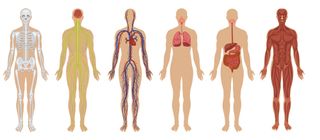
If it's a good mystery you're after, look no further than the bathroom mirror. You might think scientists would have charted every aspect of their home turf by now, but they haven't. Here are seven of the biggest body bogglers.
Why so wimpy?
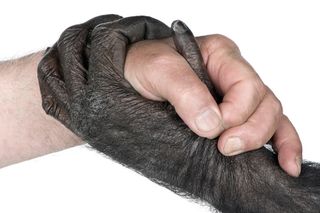
If you shaved a chimpanzee and took a photo of its body from the neck to the waist, "at first glance you wouldn't really notice that it isn't human," said Kevin Hunt, director of the Human Origins and Primate Evolution Lab at Indiana University. The two species' musculature is extremely similar, but somehow, pound-for-pound, chimps are between two and three times stronger than humans, Hunt told us. It's unclear why we're so much wimpier than our closest hominid relatives; perhaps our muscles' attachment points subtly differ, or our muscle fibers could be less dense.
Either way, the result is slightly humiliating. Once, in an African forest, Hunt watched an 85-pound female chimp snap branches off an aptly named ironwood tree with her fingertips. It took Hunt two hands and all the strength he could muster to snap an equally thick branch. [Chimps vs. Humans: How Are We Different?]
On the other hand ...

Nine out of 10 people are right-handed. More mysterious than the dearth of southpaws is the fact that humans have dominant hands in the first place. Why just one hand with top-notch motor skills, instead of a double dose of dexterity? One theory holds that handedness results from having more intricate wiring on the side of the brain involved in speech (which also requires fine motor skills). Because the speech center usually sits in the left brain hemisphere — the side wired to the right side of the body — the right hand ends up dominant in most people. However, this theory gets a big blow from the fact that not all right-handed people control speech in the left hemisphere, while half of lefties do. Perplexing.
Whose breasts?

Like all other female apes, women's breasts fill with milk when they have newborn babies to feed. But female humans alone have bloated bosoms at all other times, too. Scientists can't agree on what — or who — our "permanently enlarged breasts" are for. Most evolutionary biologists think breasts serve the purpose of attracting men, who get fooled into thinking a busty woman will make a great baby feeder (even though her breasts actually contain fat, not milk).
Anthropologists, meanwhile, tend to think breasts evolved for women and babies, not men, noting that in many cultures, men don't find big breasts remotely sexy. Florence Williams, author of "Breasts" (W.W. Norton, 2012), thinks women developed permanently enlarged bosoms to meet the greater energy needs of big-brained human babies. Hormones in breasts promote fat storage, and this stored fat gets released into milk during breast-feeding. In short, "breast fat goes toward forming the baby's brain," Williams told Life's Little Mysteries. But the theory has yet to gain universal acceptance.
Hairy explanation
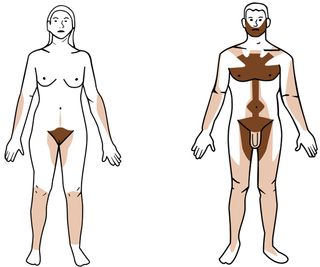
Theories abound when it comes to pubes. Some say these coarse, curly tendrils are sexual ornaments — a visual signal of sexual maturity and a reservoir of smelly pheromones. Others think bushes keep our oh-so-precious nether regions cozy. Still others assert that they serve as padding, preventing chafing during sex. Whatever the reason, many modern people want this stuff gone.
What's up, buddies?

A couple of handfuls of your body aren't actually your body. For every one of your cells, 10 microbes live inside you, and these hangers-on collectively compose a few pounds (1 to 3 percent) of your total weight. Some of this in-house fauna cleans our skin while some helps us digest food, but the bulk of these microbes contribute to our bodily functions in ways unknown. Healthy people even harbor low levels of harmful viruses, which appear to do something besides sicken us.
"We're just learning that the consequence of antibiotics is that when you get rid of the good bacteria in our guts, we can develop autoimmune diseases [such as Type 1 diabetes]. We're not as advanced in our understanding of viruses. What do viruses do for us?" Vincent Racaniello, professor of microbiology and immunology at Columbia University, told Life's Little Mysteries. Clearly, we've signed up for a whole bunch of symbiotic relationships, and have no idea what we're getting out of the deal.
Wherefore appendices?
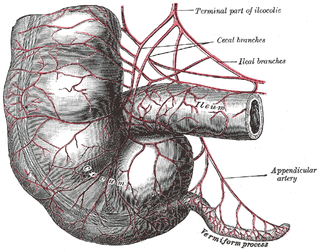
The poor old human appendix gets lumped in with the likes of wisdom teeth, ear-wiggling muscles and our other useless evolutionary holdovers. The worm-shaped organ's inconsequentiality seems proven by the fact that it can be removed with no obvious drawbacks. But biologists have recently begun to question the long-held assumption of appendix pointlessness. Some suggest it may help train the immune system during fetal development. Other research indicates the organ serves as a "safe house" for the bacteria that aid in digestion, holding a secret stash of microbes that repopulate the rest of the digestive tract after gut-evacuating bouts of diarrhea. The word "appendix" means afterthought. But maybe, just maybe, it isn't one.
Why me?
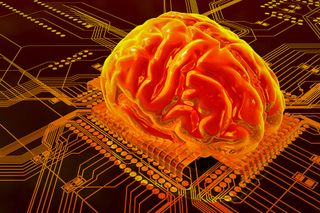
How do the 100 trillion neural connections in our brains work together to create the feeling of being alive? Many great thinkers consider consciousness to be the biggest mystery not just of the human body, but the biggest one, period. As the neuroscientist V.S. Ramachandran put it, "[A]ny single brain, including yours, is made up of atoms that were forged in the hearts of countless, far-flung stars billions of years ago. These particles drifted for eons and light-years until gravity and chance brought them together here, now. These atoms now form a conglomerate — your brain — that can not only ponder the very stars that gave it birth but can also think about its own ability to think and wonder about its own ability to wonder. With the arrival of humans, it has been said, the universe has suddenly become conscious of itself. This, truly, is the greatest mystery of all."
Sign up for the Live Science daily newsletter now
Get the world’s most fascinating discoveries delivered straight to your inbox.
Natalie Wolchover was a staff writer for Live Science from 2010 to 2012 and is currently a senior physics writer and editor for Quanta Magazine. She holds a bachelor's degree in physics from Tufts University and has studied physics at the University of California, Berkeley. Along with the staff of Quanta, Wolchover won the 2022 Pulitzer Prize for explanatory writing for her work on the building of the James Webb Space Telescope. Her work has also appeared in the The Best American Science and Nature Writing and The Best Writing on Mathematics, Nature, The New Yorker and Popular Science. She was the 2016 winner of the Evert Clark/Seth Payne Award, an annual prize for young science journalists, as well as the winner of the 2017 Science Communication Award for the American Institute of Physics.

